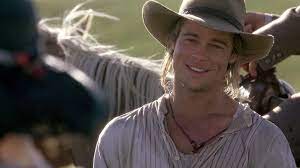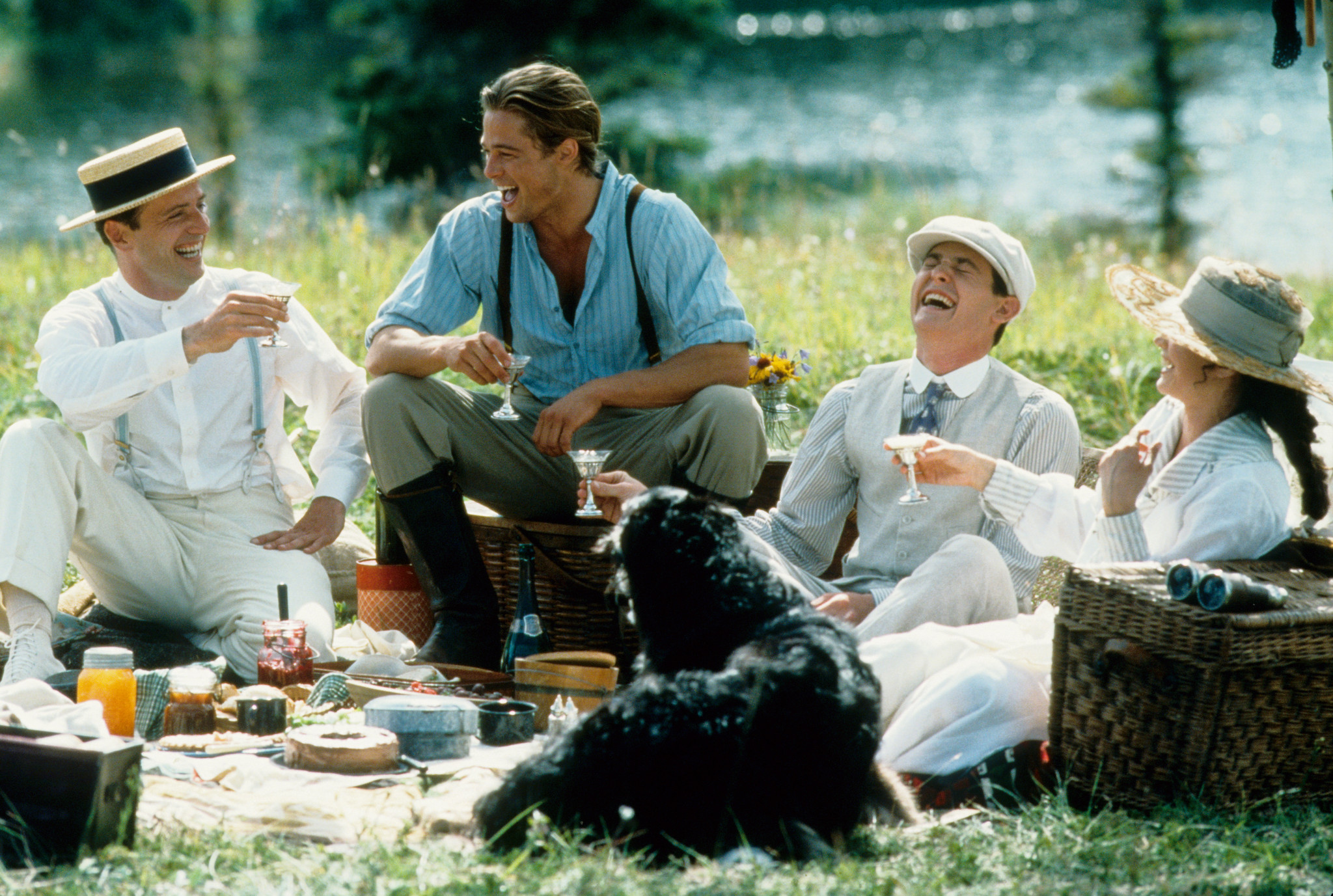Legends of the Fall (1994)

Legends of the Fall (1994) Review
Introduction
Directed by Edward Zwick and based on the novella by Jim Harrison, Legends of the Fall (1994) is an epic family saga set against the rugged beauty of early 20th-century Montana. Featuring a star-studded cast led by Brad Pitt, Anthony Hopkins, and Aidan Quinn, the film explores themes of love, loyalty, and the inescapable pull of destiny. With its sweeping cinematography and emotionally charged narrative, Legends of the Fall remains a beloved classic that captures the complexities of human relationships.
Plot Overview
The story follows the Ludlow family, led by patriarch Colonel William Ludlow (Anthony Hopkins), a former army officer disillusioned by the government’s treatment of Native Americans. Seeking solace, he raises his three sons—Alfred (Aidan Quinn), Tristan (Brad Pitt), and Samuel (Henry Thomas)—on a remote ranch in Montana.
Their idyllic life is disrupted when Samuel brings home his fiancée, Susannah (Julia Ormond). Her arrival sparks romantic tension among the brothers, particularly with Tristan, whose wild and free-spirited nature contrasts with Alfred’s disciplined demeanor. When Samuel enlists to fight in World War I, tragedy strikes, forever altering the course of the Ludlow family’s lives. What follows is a decades-spanning tale of love, loss, and redemption as the brothers navigate their fractured relationships and their evolving roles within the family.
Strengths
1. Brad Pitt’s Charismatic Performance
Brad Pitt delivers a career-defining performance as Tristan Ludlow, embodying the character’s raw intensity and emotional vulnerability. His portrayal of a man torn between his wild instincts and his love for his family anchors the film.
2. Stunning Cinematography
John Toll’s Oscar-winning cinematography captures the breathtaking landscapes of Montana with sweeping shots of rolling hills, dense forests, and dramatic skies. The visuals create an immersive atmosphere that complements the film’s epic scope.
3. Emotionally Resonant Storytelling
The film’s exploration of love, grief, and familial bonds resonates deeply, offering a poignant look at the complexities of human relationships. Its emotionally charged narrative strikes a balance between intimate character moments and grand, operatic drama.
4. Memorable Supporting Cast
Anthony Hopkins delivers a powerful performance as the steadfast yet heartbroken Colonel Ludlow, while Julia Ormond’s Susannah adds depth and nuance to the story’s romantic conflicts. Aidan Quinn and Henry Thomas provide strong performances that highlight the contrasting personalities of the Ludlow brothers.
5. James Horner’s Evocative Score
The film’s score, composed by James Horner, is a masterpiece in its own right. Its sweeping melodies and haunting motifs enhance the film’s emotional impact, elevating key scenes to unforgettable heights.
Weaknesses
1. Melodramatic Elements
The film occasionally leans too heavily into melodrama, particularly in its portrayal of romantic and familial conflicts. While these moments add emotional weight, they can feel overly theatrical at times.
2. Uneven Pacing
The film’s sprawling narrative covers multiple decades, which can result in uneven pacing. Some subplots, particularly those involving secondary characters, feel underdeveloped compared to the central storyline.
3. Predictable Plot Points
Certain story beats, such as love triangles and sibling rivalries, follow familiar tropes, making parts of the narrative predictable. While the execution is strong, these elements may lack originality for some viewers.
Themes and Symbolism
1. The Conflict Between Civilization and Nature
Tristan’s character embodies the tension between societal expectations and the untamed wilderness. His connection to nature reflects his free-spirited nature, while his struggles highlight the cost of living outside societal norms.
2. Family and Loyalty
The Ludlow family dynamic is at the heart of the film, exploring the bonds that hold them together and the betrayals that tear them apart. The brothers’ relationships illustrate the enduring power of loyalty and the pain of unresolved conflicts.
3. Love and Loss
The film’s romantic and familial tragedies underscore the transient nature of love and the resilience required to endure loss. Susannah’s relationships with the Ludlow brothers exemplify the complexity of human emotions.
Visual and Technical Aspects
1. Production Design and Costumes
The film’s period-accurate sets and costumes immerse viewers in the early 20th century, from the Ludlow family’s rustic ranch to the battlefields of World War I.
2. Editing
While the film’s transitions between time periods are generally effective, some sequences could have benefited from tighter editing to maintain narrative momentum.
3. Sound Design
The sound design enhances the immersive experience, capturing the ambient sounds of nature and the chaos of war with equal precision.
Final Verdict
Legends of the Fall (1994) is a sweeping, emotionally charged epic that showcases strong performances, stunning visuals, and a timeless exploration of love and family. While its melodramatic tendencies and uneven pacing may detract from its overall impact, the film’s poignant storytelling and breathtaking cinematography make it a memorable cinematic experience. For fans of epic dramas and character-driven narratives, Legends of the Fall remains a must-watch.
Rating: 8.5/10
